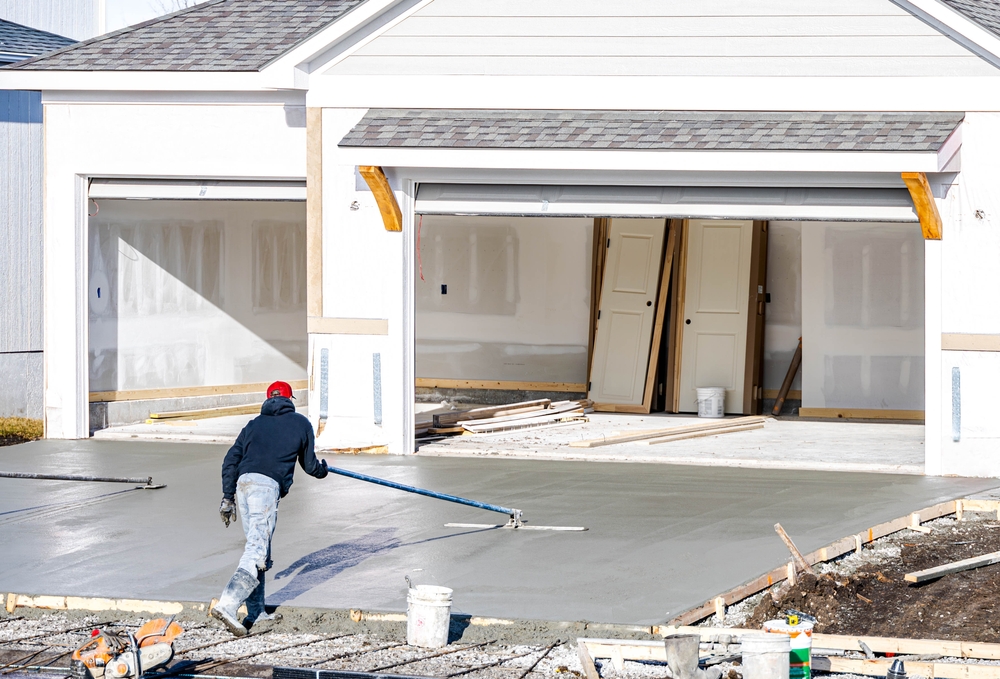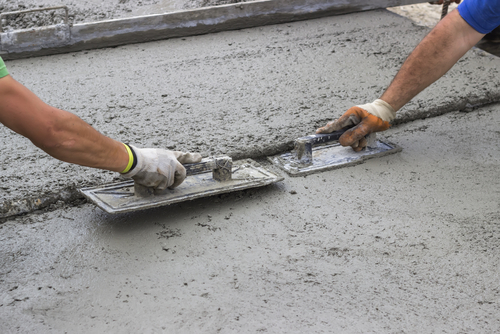
Concrete driveways are durable investments that can last for decades with proper maintenance. One crucial aspect of maintaining a concrete driveway is regular sealing. By applying a sealant, you protect the surface from weather elements, stains, and wear, thereby extending its lifespan and maintaining its appearance. If you’re wondering about the ideal frequency for sealing your concrete driveway, read on to find out more.
Factors Affecting Sealant Longevity
Several factors influence how often you should seal your concrete driveway:
1. Climate and Weather Conditions
The climate in your region plays a significant role in determining the frequency of driveway sealing. Areas with harsh winters or intense sunlight may require more frequent sealing to protect the concrete from freeze-thaw cycles, UV radiation, and moisture penetration.
2. Traffic and Usage
The amount of traffic your driveway receives also impacts its maintenance needs. High-traffic driveways tend to wear down faster and may need more frequent sealing compared to driveways with lighter use.
3. Quality of Previous Sealing
The quality of the previous sealant application affects how long it lasts. A well-applied, high-quality sealant will provide better protection and last longer, reducing the frequency of resealing.
4. Type of Sealant Used
Different types of sealants have varying lifespans. Some may last longer than others based on their formulation and intended use. It’s essential to choose a sealant that is appropriate for your climate and driveway conditions.
Recommended Sealing Frequency
Based on these factors, sealing a concrete driveway is generally recommended every 2 to 10 years. This wide range accommodates varying conditions across different regions and ensures your driveway remains well-protected.
Resealing Your Driveway
Resealing your driveway at regular intervals offers several benefits:
- Enhanced Durability: Sealants protect concrete from moisture, preventing cracks and erosion caused by water penetration.
- Improved Appearance: Regular sealing enhances the curb appeal of your property by preserving the driveway’s color and finish.
- Cost Savings: Investing in regular maintenance can prevent costly repairs or premature replacement of your driveway.
Signs It’s Time to Reseal
To determine when your concrete driveway needs resealing, watch for these signs:
1. Water Absorption
Pour water on the surface of your driveway. If the water beads up and does not soak into the concrete, the sealant is still effective. If it absorbs quickly, it may be time to reseal.
2. Visible Wear and Tear
Inspect your driveway regularly for cracks, stains, or areas where the surface appears worn down. These are indications that the sealant is no longer providing adequate protection.
3. Loss of Color
If your driveway’s color has faded or if you notice discoloration due to exposure to sunlight or chemicals, resealing can restore its original appearance.
4. Aging Sealant
Consider the age of the previous sealant application. Even if there are no visible signs of wear, older sealants may become less effective over time and require refreshing.
DIY vs. Professional Sealing
While some homeowners opt for DIY sealing kits, hiring a professional contractor can ensure the job is done correctly and efficiently. Professionals have the expertise and equipment to apply sealants evenly and effectively, maximizing their longevity and protective benefits.
Conclusion
Maintaining a concrete driveway involves regular sealing to protect its integrity and appearance. By resealing your driveway every 2 to 10 years, depending on factors like climate, usage, and sealant quality, you can ensure it remains durable and visually appealing for years to come.
Need Concrete Services in Ijamsville, MD?
Here at Bob Nichols Paving, we take pride in being a leading asphalt paving contractor known for our commitment to excellence and unmatched expertise in the industry. Whether you need a new driveway, asphalt paving for your home, or a perfectly smooth parking lot for your business, our skilled team is equipped to handle projects of any scale and complexity. Contact us today to learn more about what we can do for you!

Concrete is a durable and versatile building material, but over time, it can develop wear and tear due to various factors such as weather, age, and improper installation. When concrete surfaces start to show signs of damage, it is important to address these issues promptly to prevent further deterioration and maintain the integrity of the structure. In this blog, we will discuss the top 5 common concrete repair issues and provide recommendations on how to fix them effectively.
1. Cracks in Concrete
One of the most common issues with concrete surfaces is the development of cracks. Cracks can occur due to several reasons, including shrinkage during curing, expansion and contraction from temperature changes, or structural issues. To repair cracks in concrete, it is important to first assess the extent of the damage. For hairline cracks, a simple crack filler or concrete sealer can be used to fill and seal the crack. For larger cracks, a patching compound or hydraulic cement may be necessary to restore the integrity of the concrete surface.
2. Spalling or Scaling
Spalling or scaling is another common issue that affects concrete surfaces, particularly in areas exposed to freeze-thaw cycles or heavy traffic. Spalling occurs when the surface of the concrete starts to chip, flake, or crumble, exposing the underlying aggregate. To repair spalling or scaling, the damaged areas should be removed and cleaned thoroughly. A concrete patching compound or resurfacing material can then be applied to restore the surface and protect it from further damage.
3. Efflorescence
Efflorescence is a white, powdery substance that forms on the surface of concrete due to the migration of salts and minerals within the concrete. Efflorescence is not only unsightly but can also weaken the concrete over time. To remove efflorescence from concrete surfaces, a mild acid solution or efflorescence cleaner can be used to dissolve and wash away the salts. Once the efflorescence has been removed, the surface should be sealed with a concrete sealer to prevent future buildup.
4. Leaks and Moisture Intrusion
Leaks and moisture intrusion can cause significant damage to concrete surfaces, leading to mold growth, deterioration of the concrete, and structural instability. To repair leaks and moisture intrusion in concrete, it is important to identify the source of the water infiltration and address it accordingly. This may involve sealing cracks, installing proper drainage systems, or applying a waterproofing membrane to the concrete surface to prevent water penetration.
5. Corrosion of Reinforcement
Concrete structures that contain steel reinforcement can be susceptible to corrosion over time, especially in areas exposed to saltwater or harsh environmental conditions. Corrosion of reinforcement can compromise the structural integrity of the concrete and lead to spalling or cracking. To repair corrosion of reinforcement, the affected areas should be cleaned and treated with a corrosion inhibitor to prevent further deterioration. In severe cases, damaged reinforcement may need to be replaced, and the concrete repaired and reinforced to ensure structural stability.
Summary
Addressing common concrete repair issues promptly is essential to preserve the longevity and structural integrity of concrete surfaces. By identifying the specific issue, assessing the extent of the damage, and choosing the right repair method, property owners can effectively restore and protect their concrete structures for years to come. Whether it’s repairing cracks, spalling, efflorescence, leaks, or corrosion of reinforcement, taking proactive measures to address these issues will ensure that concrete surfaces remain strong, durable, and visually appealing for the long term.
Need an Asphalt Paving Contractor in Ijamsville, MD?
Here at Bob Nichols Paving, we take pride in being a leading asphalt paving contractor known for our commitment to excellence and unmatched expertise in the industry. Whether you need a new driveway, asphalt paving for your home, or a perfectly smooth parking lot for your business, our skilled team is equipped to handle projects of any scale and complexity. Contact us today to learn more about what we can do for you!





